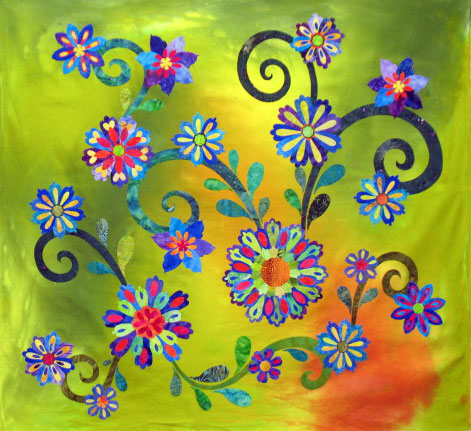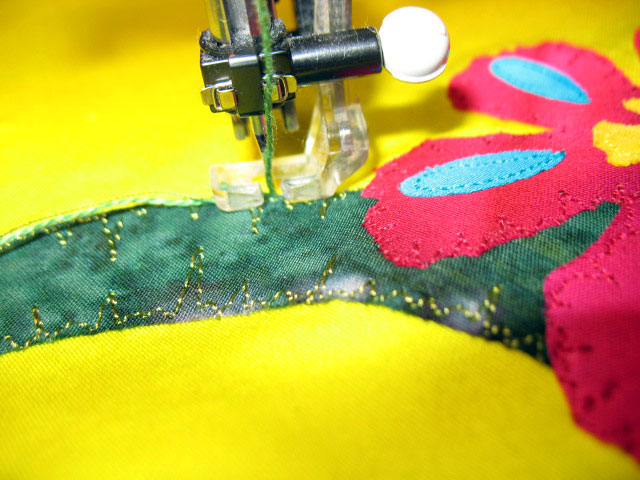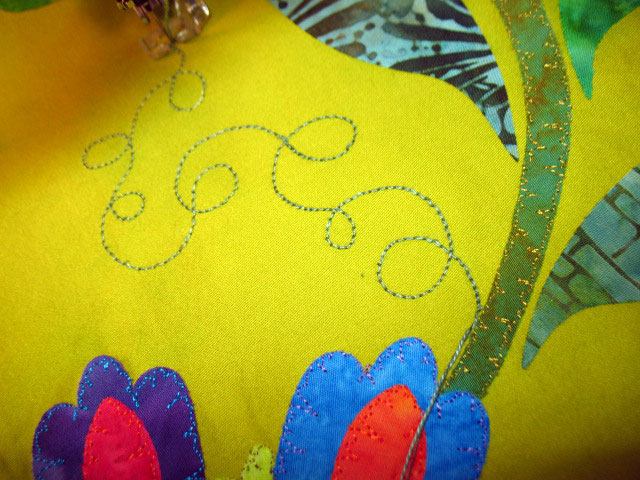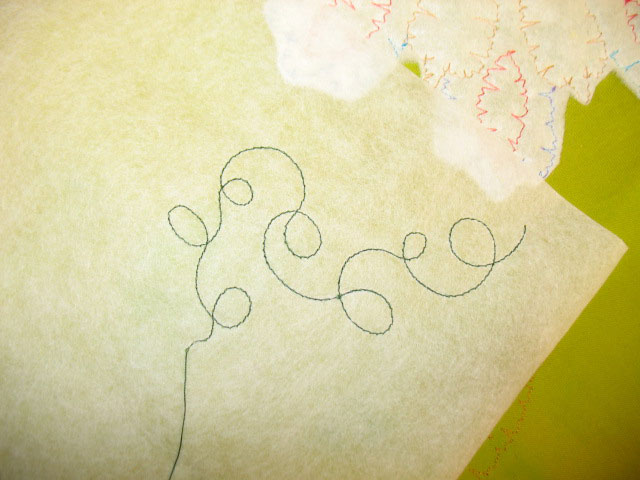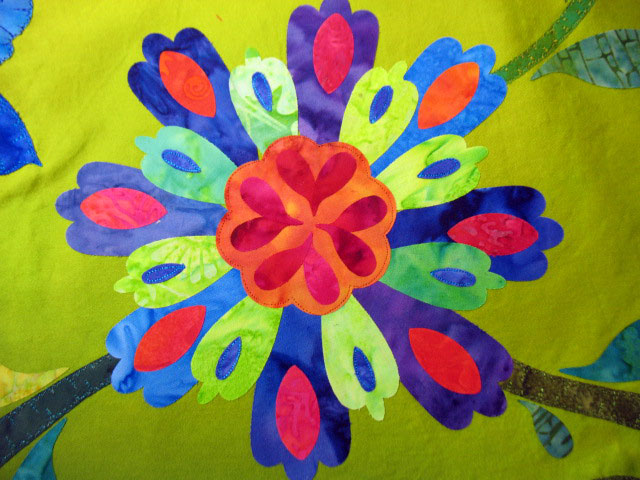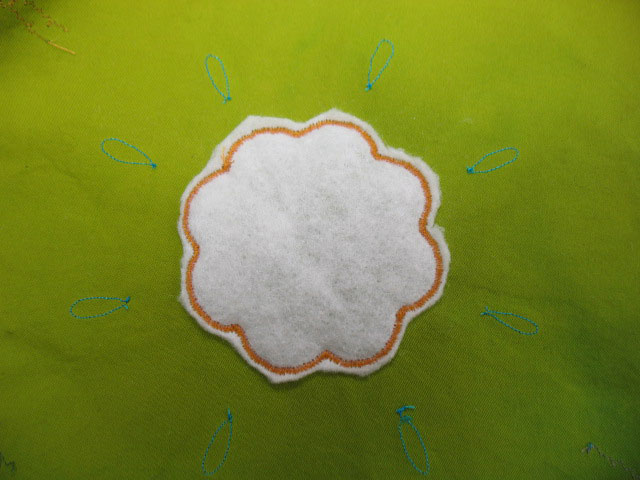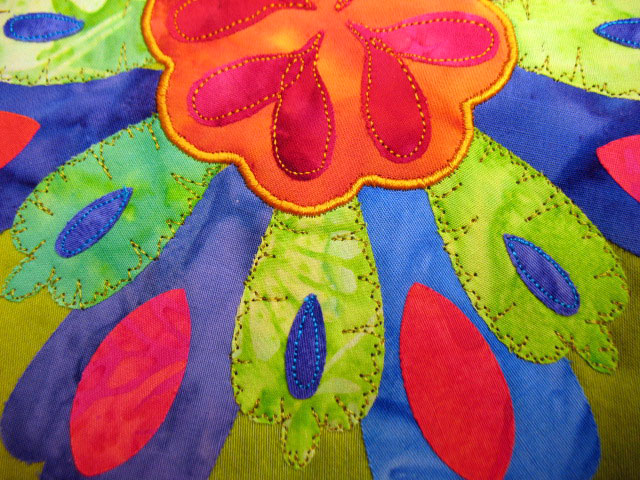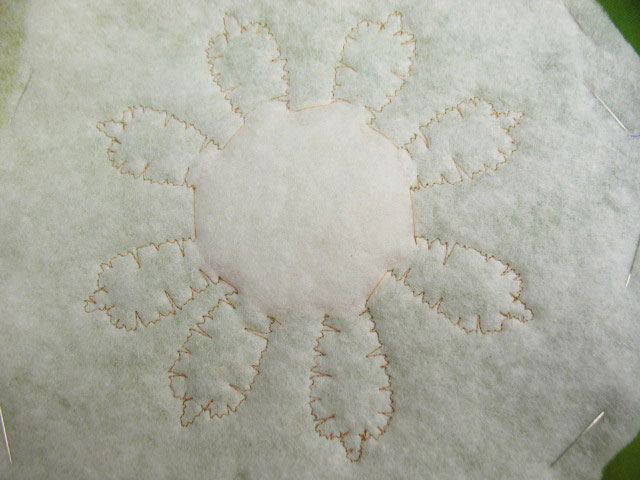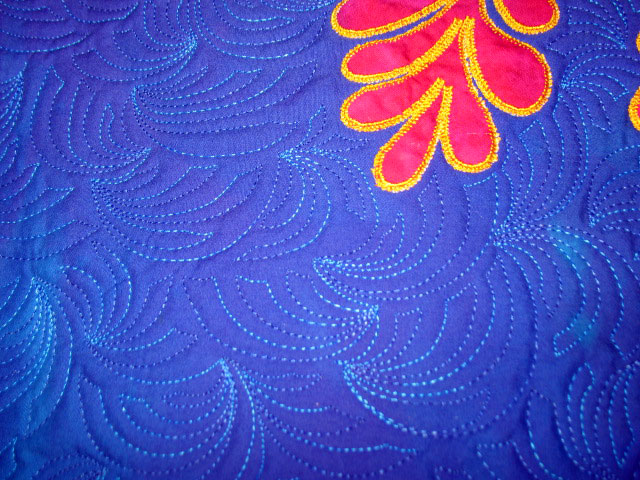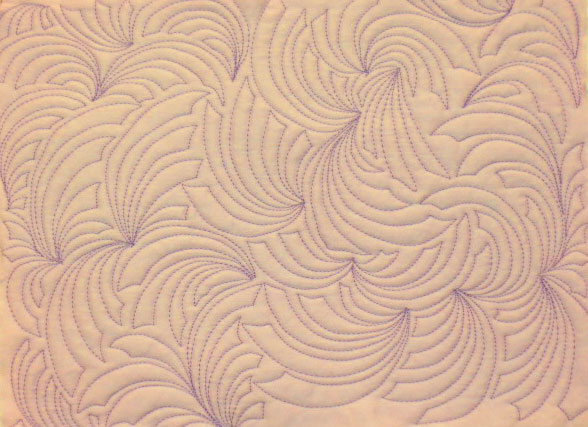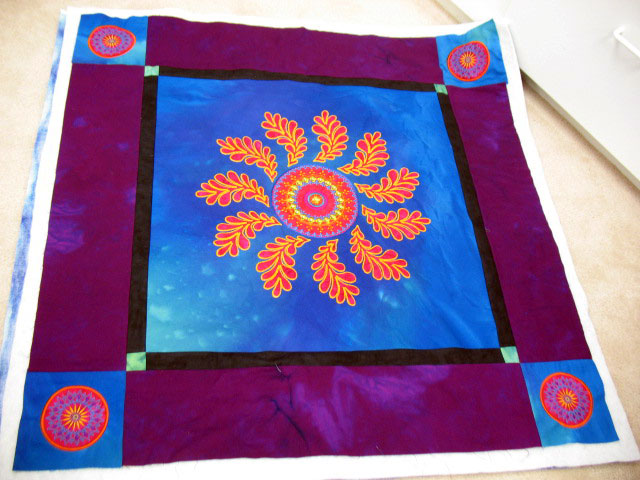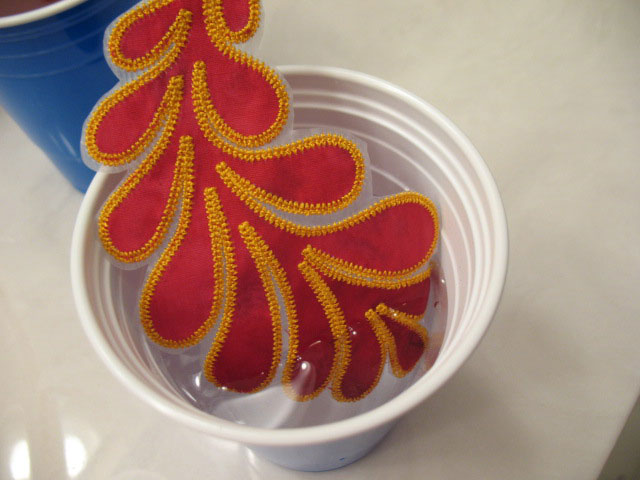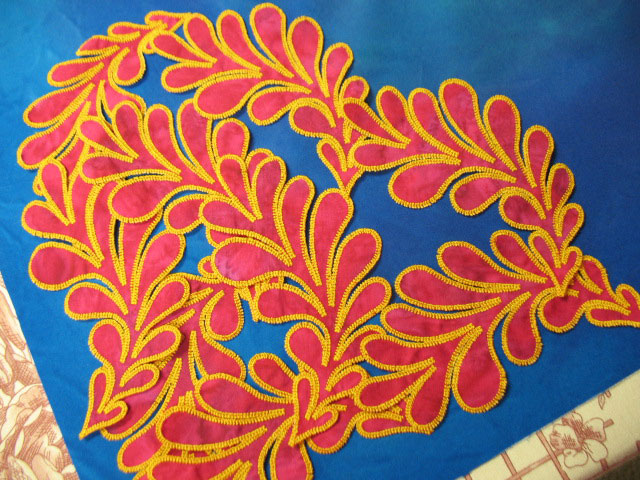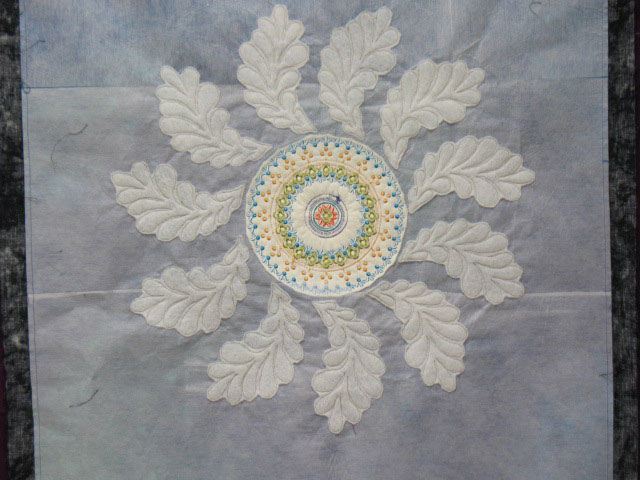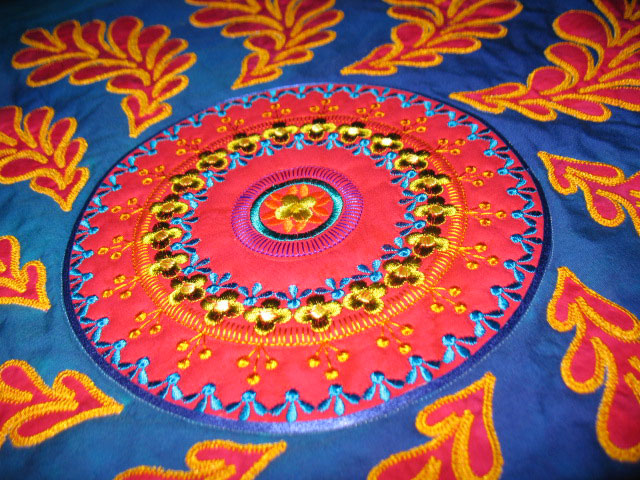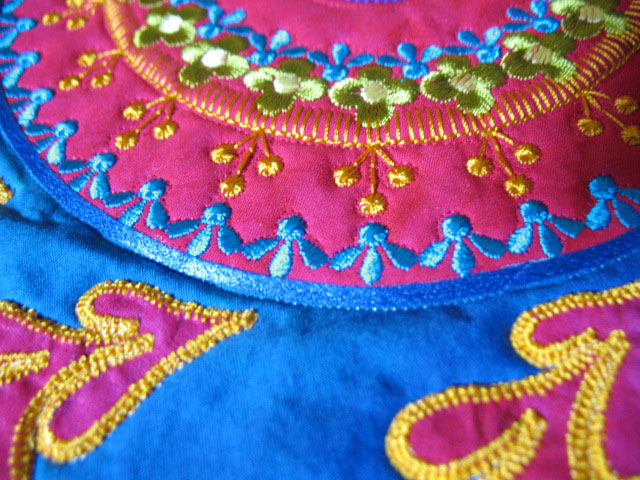It’s a Give-Away!
****11/21/11 UPDATE: THIS GIVE AWAY IS NOW CLOSED
Starting today, we’re hosting a give-away for the Beam ‘n Read Light! If you haven’t seen this product before, here’s a photo that shows you what it is: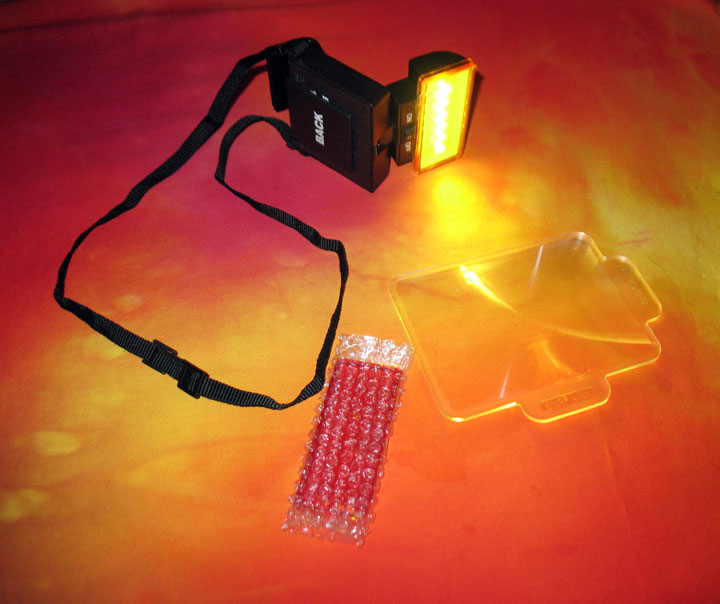 The long black strap is an adjustable neck strap so that you can wear it around your neck, enabling you to focus it directly on your work. The base of the light is also adjustable, so it really is possible to find just the right angle to direct that wonderful beam of light! Each light comes with a yellow and a red light cover, so you even have your choice of the type of light that’s emitted. On top of all that, there is also the option of a magnifying lens that easily fits onto the light. I haven’t gotten to the point that I need that feature yet, but the way my eyes are aging, it sure is nice to know that feature is ready for me!
Now maybe you don’t think this light sounds like your cup of tea. I’ll tell you, I’m amazed at just how handy this product is. If I think of just the last 5 days, here are some examples of hand work that I’ve used my Beam ‘n Read Light for:
First off is this embroidered quilt block that I stitched as a split design. If you look closely, you’ll see registration cross hairs and basting lines that were stitched:
The long black strap is an adjustable neck strap so that you can wear it around your neck, enabling you to focus it directly on your work. The base of the light is also adjustable, so it really is possible to find just the right angle to direct that wonderful beam of light! Each light comes with a yellow and a red light cover, so you even have your choice of the type of light that’s emitted. On top of all that, there is also the option of a magnifying lens that easily fits onto the light. I haven’t gotten to the point that I need that feature yet, but the way my eyes are aging, it sure is nice to know that feature is ready for me!
Now maybe you don’t think this light sounds like your cup of tea. I’ll tell you, I’m amazed at just how handy this product is. If I think of just the last 5 days, here are some examples of hand work that I’ve used my Beam ‘n Read Light for:
First off is this embroidered quilt block that I stitched as a split design. If you look closely, you’ll see registration cross hairs and basting lines that were stitched:
 …and I used my Beam ‘n Read to help me remove all those extraneous stitches! (And didn’t this block come out great?!) Next up, I needed that light to help me separate this sheet of embroidered plumes that were embroidered onto water soluble stabilizer:
…and I used my Beam ‘n Read to help me remove all those extraneous stitches! (And didn’t this block come out great?!) Next up, I needed that light to help me separate this sheet of embroidered plumes that were embroidered onto water soluble stabilizer:
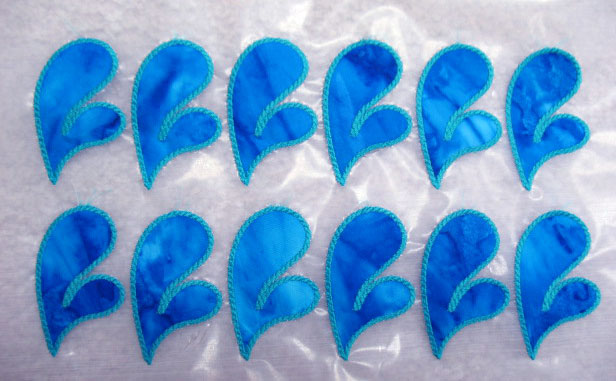 As you cut these out, you’ve got to be really careful not to accidentally cut into the stitches…
As you cut these out, you’ve got to be really careful not to accidentally cut into the stitches…
 and the Beam ‘n Read light makes it a whole lot easier to see all those stitches! Here are a bunch of these plumes in different sizes and different edge finishes, after they’ve had the stabilizer rinsed off:
and the Beam ‘n Read light makes it a whole lot easier to see all those stitches! Here are a bunch of these plumes in different sizes and different edge finishes, after they’ve had the stabilizer rinsed off:
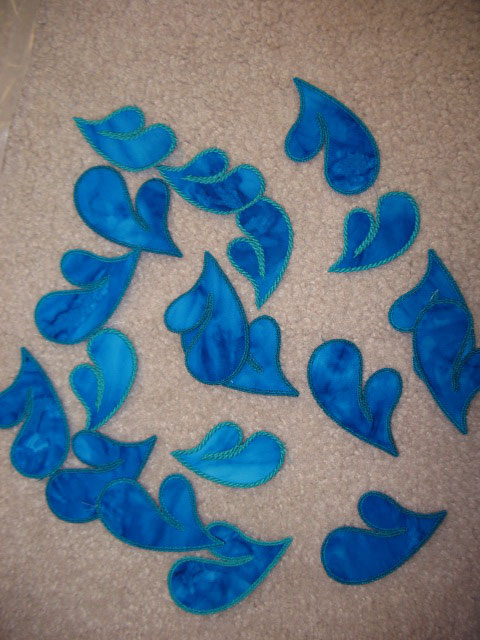 And of course, the Beam ‘n Read is great when you’re trying to sew the binding on a quilt:
And of course, the Beam ‘n Read is great when you’re trying to sew the binding on a quilt:
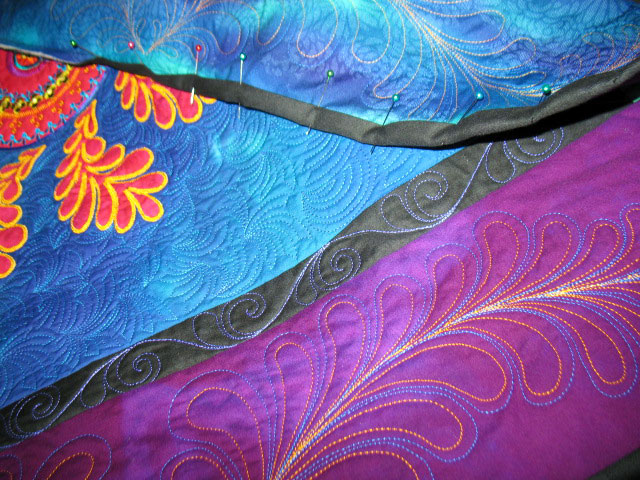 And the light really helped me out the other night when I worked on this binding in a poorly lit hotel room:
And the light really helped me out the other night when I worked on this binding in a poorly lit hotel room:
 Ugh! And what about pulling all these thread tails to the backside of this top?
Ugh! And what about pulling all these thread tails to the backside of this top?
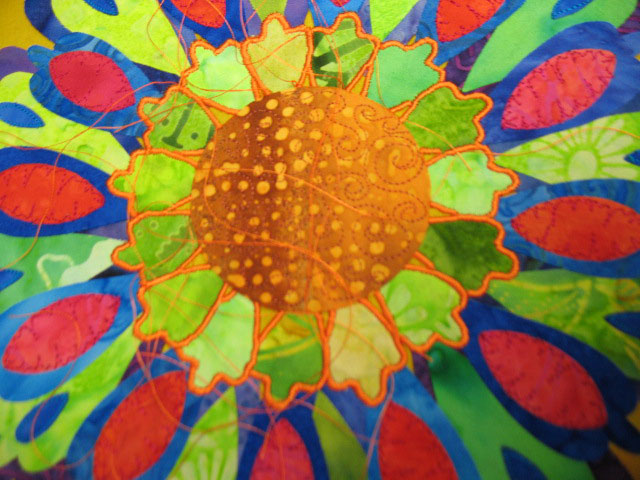 You guessed it-the Beam ‘n Read made it possible for me to actually SEE those thread tails to pull them through! And last but not least, this light has been making it easier to remove the stabilizer from all my embroidered snowflake blocks:
You guessed it-the Beam ‘n Read made it possible for me to actually SEE those thread tails to pull them through! And last but not least, this light has been making it easier to remove the stabilizer from all my embroidered snowflake blocks:
 Bottom line…this is one useful product! So, one of you lucky readers will own your own, courtesy of the Beam ‘n Read Folks! If you’d like a chance to win one, it’s easy to enter the giveaway. Just post a comment to this blog post that tells me what you enjoy about reading my blog and you are entered! Entries must be posted by 11:59 p.m.eastern time on Sunday, November 20, 2011. And by the way, these lights, as well as all fabric, Isacord Thread, YLI Thread, Sulky Threads, and Quilters Dream Batting are 20% off in our online store until 9:00 am on Black Friday. To get the discount, all you need to do is enter “2 weeks” (without the quotes) in the discount code box during checkout!
And to increase your chances of winning this great light, make sure you run over to my buddy Kelly Jackson’s blog at I Have a Notion, because she is also hosting a Beam ‘n Read Give-Away this week! And if you don’t win one of these lights during these blog hops this week, then check out the Sew I Quilt Blog between 11/21-11/30/11, because she’ll be hosting a give-away during those dates!
Bottom line…this is one useful product! So, one of you lucky readers will own your own, courtesy of the Beam ‘n Read Folks! If you’d like a chance to win one, it’s easy to enter the giveaway. Just post a comment to this blog post that tells me what you enjoy about reading my blog and you are entered! Entries must be posted by 11:59 p.m.eastern time on Sunday, November 20, 2011. And by the way, these lights, as well as all fabric, Isacord Thread, YLI Thread, Sulky Threads, and Quilters Dream Batting are 20% off in our online store until 9:00 am on Black Friday. To get the discount, all you need to do is enter “2 weeks” (without the quotes) in the discount code box during checkout!
And to increase your chances of winning this great light, make sure you run over to my buddy Kelly Jackson’s blog at I Have a Notion, because she is also hosting a Beam ‘n Read Give-Away this week! And if you don’t win one of these lights during these blog hops this week, then check out the Sew I Quilt Blog between 11/21-11/30/11, because she’ll be hosting a give-away during those dates!

